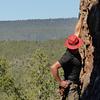Take a photo of a barcode or cover
myco (mushroom) water filtration, oil clean-up, mycopesticides, mycogardening...
adventurous
hopeful
informative
inspiring
medium-paced
hopeful
informative
slow-paced
Many insights into the life of mushrooms, and how we can benefit from their presence in our environment.
Have you ever wished you had a mycologist uncle who would rant to you about his love for mushrooms? Look no further than this book! Far from the most scientifically rigorous book about mushrooms, Paul Stamets makes up for it with pure passion and a refreshing do-it-yourself attitude toward science. A must read for any amateur mycologist.
informative
inspiring
slow-paced
Stamets knows his mushrooms, but he also goes off the fuckin' rails for like a third of the book. What kind of mushroom do you have to eat to understand how mycelium is like dark matter and hurricanes? This "whoa far out" attitude carries over into extravagant optimism about the potential applications for mushrooms in medicine or bioremediation. There are lots of possibilities, sure, but particularly with the bioremediation stuff I really want to know what the barriers to adoption are for this supposedly cheap and effective remedy. Stamets suggests that either people don't know how to grow mushrooms or they're just fuddy-duddies who don't want to try new things, neither of which strikes me as plausible.
Skepticism aside though, this book gave me a ton of cool ideas for propagating mushrooms and adding them to my garden.
Skepticism aside though, this book gave me a ton of cool ideas for propagating mushrooms and adding them to my garden.
This book is dense with information. It provides a great introduction to the fungus world, with plenty of pointers and roadsigns for further education. What makes it outstanding is that the author has first hand experience in practically everything he writes about. Highly recommended reading.
I borrowed this book in kindle format from my local library because the price to purchase the kindle version seemed rather high to me ($24+ at Amazon). However, after reading it, I could recommend paying a higher price for the book, especially if you are interested in growing or gathering mushrooms.
I was looking for a general introduction to mushrooms and their myriad uses. This book gave me that and much more. The first part of the book goes into great detail about the amazing uses of mushrooms, from cleaning up toxic waste, to rehabilitating landscapes devastated by fire, over-harvesting, or pests, to cancer prevention, to facilitating the growth of other agricultural products. And oh, by the way, food.
The second part of the book is a manual of how to grow mushrooms and mycelium in various habitats and for various uses. It seemed to be targeted primarily to organizations and governmental entities that might be interested in one or more of the remedial uses of mushrooms, but there was some information that would be useful for the small private grower. I skimmed most of this, since I'm not planning to go into mushroom production. But you should at least skim it to get a flavor of the different ways it can be handled.
The third part of the book is essential a catalog of specific varieties of mushrooms, with much detail about habitat, characteristics, and uses. Again, I skimmed this, but just this section would make the book worth purchasing as a reference.
I was looking for a general introduction to mushrooms and their myriad uses. This book gave me that and much more. The first part of the book goes into great detail about the amazing uses of mushrooms, from cleaning up toxic waste, to rehabilitating landscapes devastated by fire, over-harvesting, or pests, to cancer prevention, to facilitating the growth of other agricultural products. And oh, by the way, food.
The second part of the book is a manual of how to grow mushrooms and mycelium in various habitats and for various uses. It seemed to be targeted primarily to organizations and governmental entities that might be interested in one or more of the remedial uses of mushrooms, but there was some information that would be useful for the small private grower. I skimmed most of this, since I'm not planning to go into mushroom production. But you should at least skim it to get a flavor of the different ways it can be handled.
The third part of the book is essential a catalog of specific varieties of mushrooms, with much detail about habitat, characteristics, and uses. Again, I skimmed this, but just this section would make the book worth purchasing as a reference.
Probably the top book of the year, full of fascinating information that opened my eyes to the role of fungi in the garden and the world. Full review at http://waldeneffect.org/blog/How_to_Cultivate_Edible_Mushrooms_For_Free__44___Part_1/
30% reference material, the rest is not only readable but darn-tootin readable. Captivating, informative, inspiring. Just a tad preachy; actually not as much as I'd been expecting from Stamets.




